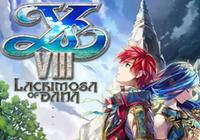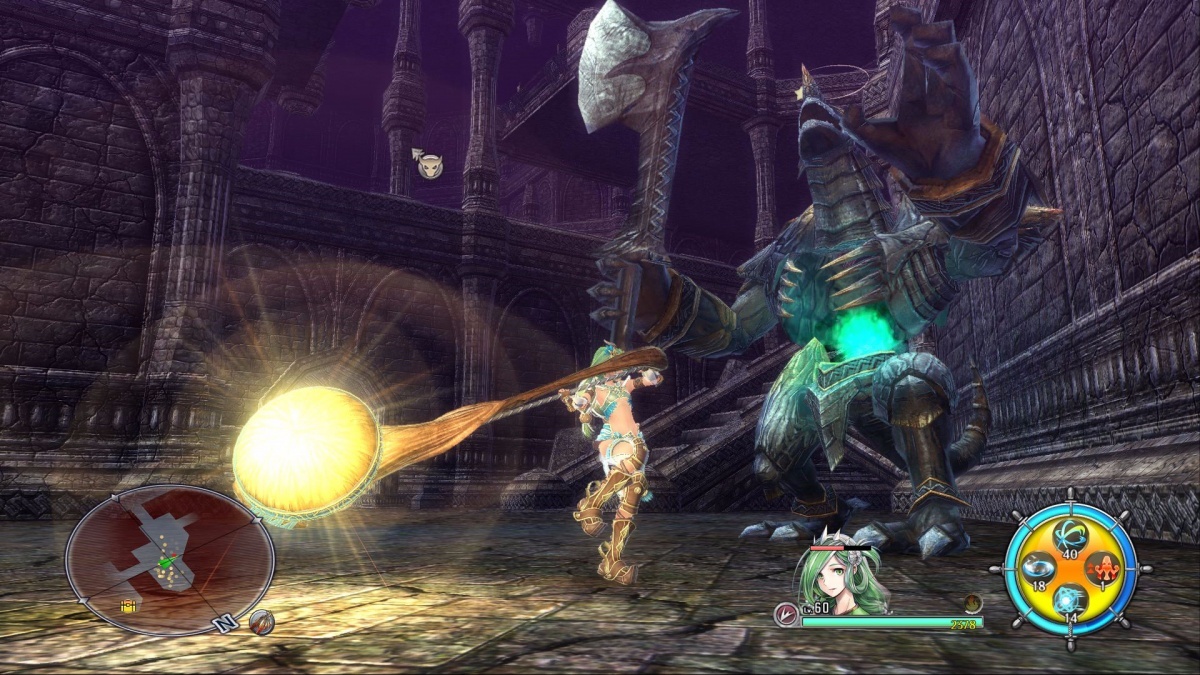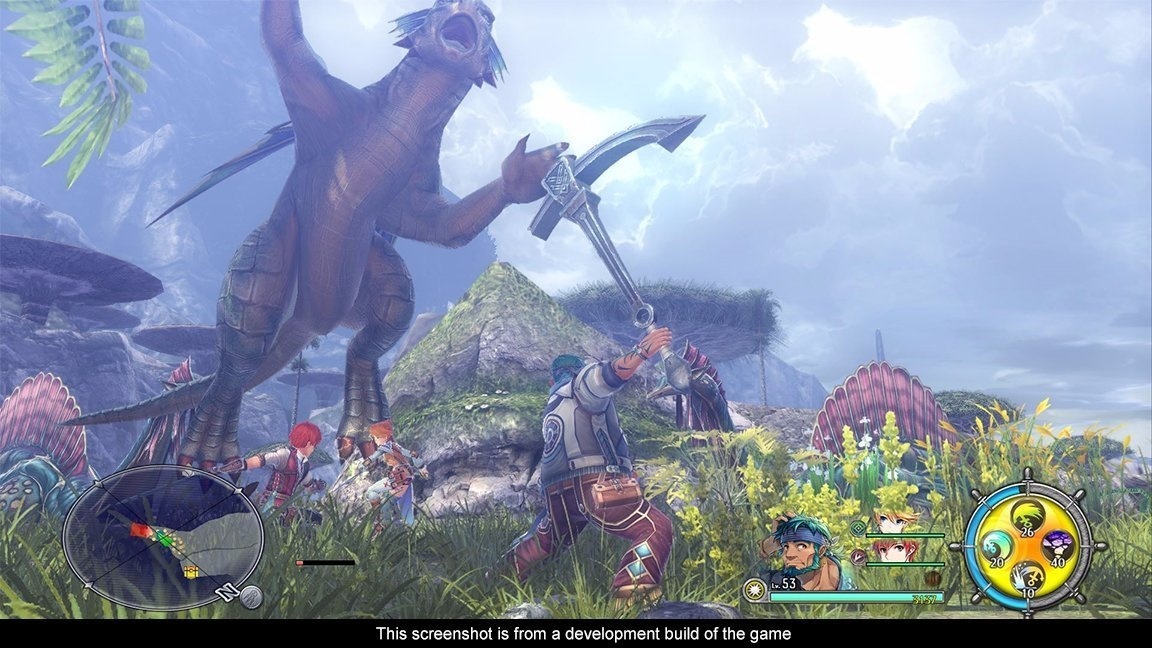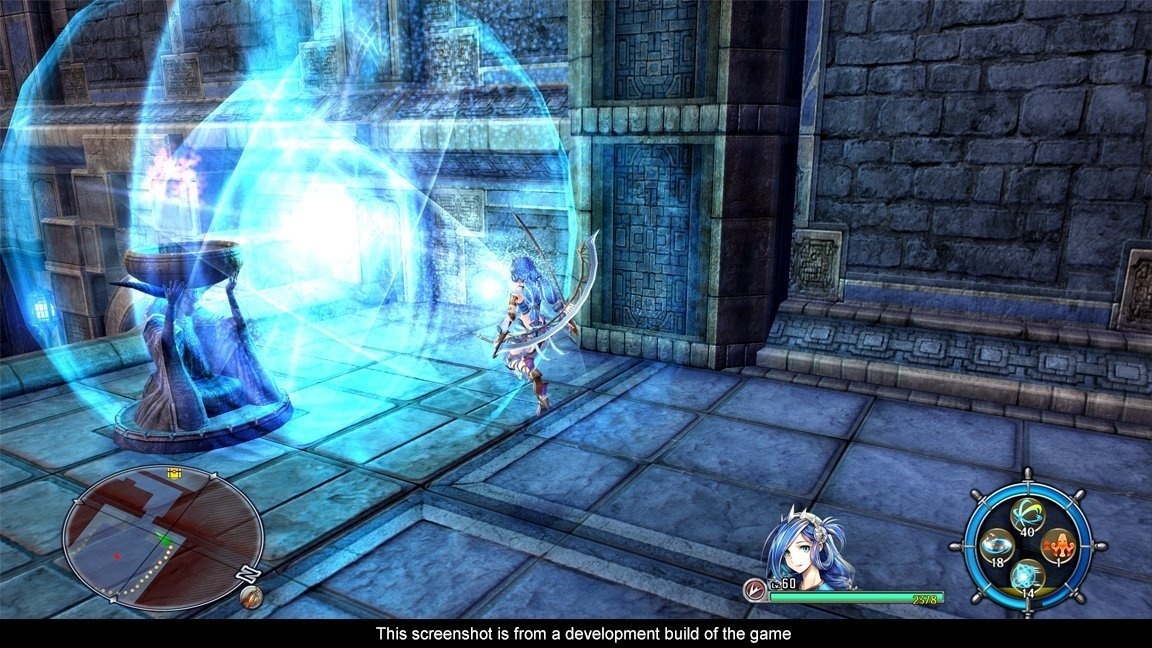Ys VIII: Lacrimosa of Dana (Nintendo Switch) Review
By Rudy Lavaux  25.07.2018
25.07.2018

What does it take for a JRPG franchise to be universally renowned? Names like Final Fantasy or Dragon Quest or even "Tales of" need no introduction, but why does a name like Ys not ring as many bells? Ys is a series that always existed alongside those other successful franchises, but which never quite garnered the same level of attention. Ys admittedly had a tormented series of releases outside of Japan, with the very first game only coming out of Japan in its Master System version, then as a compilation of the first two for NEC's Turbo CD system in North America (later released on the Wii Virtual Console). Ys III is probably the older one that most people are familiar with since it came out in the West on all three 16-bit machines, all made by three separate development studios. Then the series wouldn't see another release outside of Japan between the SNES version of YS III in 1992 and the PS2 port of Ys VI: The Ark of Naphistim in 2005. That 13 year gap certainly didn't help things, but ever since Ys VI came out, the series has been going strong on Windows PC but most importantly on Sony's home and handheld systems for the past decade. The definitive release of Ys VIII: Lacrimosa of Dana for the Nintendo Switch is therefore nothing short of a small miracle that Nintendo players couldn't have dreamed of for the last 20 years, if it wasn't for the success of Nintendo's current money maker.
Adol Christin and his eternal sidekick, Dogi, are in for yet another improbable adventure as they travel the seas aboard the Lombardia when a gigantic tentacled monster sinks the ship. The crew of the ship and its passengers find themselves cast away on a deserted island, which they say no one ever managed to explore and come back alive to tell the tale, most likely due to said monster patrolling the waters around the island and sinking anything that comes by. Adol soon rejoins with Dogi and Captain Barbaros and teams up in exploring the island for other castaways with Laxia and Sahad, two other playable characters, so most of the game will be spent exploring the island, mapping it, but all the while, Adol keeps getting strange dreams about a blue haired girl named Dana and a kingdom called Eternia. Things are about to get a lot more complicated and deep than it appears indeed as, soon, those dreams will start affecting what the heroes do in the real world.
There appears to be more to the island of Seiren than meets the eye. While the older Ys games were not necessarily known for their epic stories, the PC-Engine versions thereof certainly are still fondly remembered for their presentation through animated cut-scenes and plenty of voiced dialogue, although admittedly very poorly dubbed in their North American version but for the time, the simple idea of voiced over dialogue in a console RPG of the early 1990s was groundbreaking. The more modern Ys games, however, do not suffer from such issues with the story being generally well thought out and interesting to sit through. This one may well be the best the series has seen to this day. If one word could describe the story, it would be unpredictable. JRPGs in general are more often than not full of reused clichés that for better or worse are accepted by their target audience without question. Ys VIII does veer at times towards those clichés but without ever committing fully to them, rather choosing to focus on its topic and developing it in full, and manages to surprise and keep hooked even the player who has already seen their fair share of JRPG stories over the past 30 years or so of the genre being relevant, so fans of the genre are bound to be pleased.
Exploring the island takes initially a time of adaptation since, contrary to most modern open world JRPGs, the world is divided into smaller areas that are connected between them à la Final Fantasy XII instead of a vast world being open before the player's eyes. Other surrounding areas are directly visible at all times, unless some land formation is in the way, but invisible walls prevent from jumping straight from one place to the other to take shortcuts, which is maybe something that will come as a disappointment in this day and age, or even restrictive, but this ultimately doesn't remove from the interest levels and never gets in the way of the story and cast of loveable characters grabbing attention. Exploration is made a lot more fun than it would initially seem to be by the fact that the whole island has to be explored and mapped for completion, and doing that is rewarded by valuable items that make the task not a chore at all.

It is rather an overarching important side-quest that not only makes sense from a story standpoint, since all possible surviving castaways must be found so no stone should be left unturned quite literally, but the rewards are never lousy, either, so that doubles the interest in seeing that map completed and those percentages of completion, both for filling the map but also finding absolutely all collection points and treasure chests, reaching 100% by the end. This should take, if going for absolute completion, anywhere between 70 and 80 hours, which is a far cry from the likes of Skyrim or even Xenoblade Chronicles 2, but turns out to be a great sweet spot where players won't have grown bored or tired of it yet but will have a good feeling of accomplishment once that's done. Rushing through just for the story should understandably take less than that, though.
Besides exploring and advancing the plot, other activities are thrown in-between, such as crafting objects since, after all, on a deserted island devoid of infrastructure, any semblance of civilised life in groups would require tools, sustenance and weapons to be built from scratch or improved upon incrementally. Acquiring new gear will all be made by crafting from items dropped by enemies or gathered from collection points, while improving weapons will be done in a similar fashion, yet always improving on the weapons that every main character starts off with. As for sustenance, beyond fruit that can be found at collection points, fishing will be the main source of protein for the survivors, which is always a sure way for fun little distractions outside of battling hundreds of small fry. Furthermore, the island is roamed by primordials, also known as saurians, which are also known as... well… dinosaurs, really, and the wildlife will not just leave Castaway Village be.
Therefore, at intervals during the story, the heroes will have to stave off invasions of their settlement but also to be proactive about possible over-abundance of dangerous critters in certain areas of the game where vital supplies are gathered regularly. Those are called "raids" and "hunts," respectively, and play out like arcade style action sequences with scores, ranks and bonuses popping up from other non-playable characters lending assistance. While those are not bad in and of themselves, their presence interspersed in the story kind of breaks the pace of the storytelling when they happen, so this, again while not "bad" per se, turns out to be the weakest point, yet it is a testament to this game's quality that even its weakest point still isn't bad at all in and of itself. Rather, it is trying to achieve an S-Rank on all of them for completion that spurs some rarely seen moments of deep "controller gnawing" frustration that make those sequences less enjoyable than they could have been, although admittedly achieving this is totally optional in the greater scheme of things.
Lastly, quests can be accepted from inhabitants of Castaway Village, although a lot of them may be missed forever if they are neglected for too long as some of them lock out after a while, which is a shame but at least the game is upfront about it so no player should find themselves badly surprised by this.

Fulfilling quests, as well as finding or crafting presents for other castaways, will grow their approval of Adol, which in turn feeds into a stat called reputation that is also affected by ranks obtained in hunts and raids, among many other factors. Reaching a high reputation will affect the ending. Indeed, seeing the true ending of this, out of three possible ones, will require that a decent amount of time be devoted to some of those seemingly more optional tasks yet, really, most of them are so compelling and interesting to begin with that it should not feel like a chore to have to do those and it all comes together into a tightly knit package that, there's no other way around it, exceeds expectations.
Older Ys games did not need to rely on a good story beyond the high-tech way of presenting it on CD based formats, since they had the benefit of standing out by being action RPGs at a time when things like the Seiken Densetsu series had not yet been released. Due to that, however, the older games feel clunky to say the least, at least up until the PS2 era and all the subsequent remakes that ensued, such as Ys: Memories of Celceta. From Ys VI onwards, the series took a leaf out of more modern ARPGs and stopped using the archaic mechanic of bashing into enemies to damage them, which didn't feel out of place on 8-bit consoles but had already started feeling odd on 16-bit systems by the time Ys V came around. Ys VIII: Lacrimosa of Dana represents the pinnacle of this evolution of the series since now Adol and friends control fluidly, attacks are now assigned to actual action buttons and rolling and jumping are all part of the array of movements that the player can perform at any time to get the upper hand on any foe. As opposed to another JRPG released on Switch, Xenoblade Chronicles 2, Ys VIII gives full control over the character's movement and attacks do have to connect to register, which makes this Switch release really the first top-tier ARPG the system has received, and it truly feels great to be able to enjoy a game that controls so well, both at home and on the go in what is the definitive version of it.
Indeed, on Switch it packs all of the content of the PS4 version, which the PS Vita version lacked a few elements thereof, combined with all of the DLC made available before, including all the costumes that were otherwise exclusive to the PS Vita version. What it may not have over the PS4 version, though, is graphical fidelity, although that is expected and perfectly understandable. Ys VIII caps at 30fps with dips in frame-rate here and there, especially in one key area of the game where some of the widest and crowded open areas are found, which make the system visibly struggle on-screen. Docked, the Switch aims for a full 1080p image and by and large manages to stick to it. During cut-scenes, it sometimes appears as if distant objects in the background are rendered at a lower resolution than the character at the forefront on whom the focus of the camera is.

This gives a sort of depth of field effect that may actually just be a performance saving measure to ensure that the gorgeously designed characters lose nothing of their splendour while something important is happening. When the player is in control, however, resolution may dip way lower than 1080p, mostly to 720p when the action is intense and, it seems, a little lower than that during the absolute most intense moments. In handheld mode things get way blurrier, unfortunately, although again the system does manage to remain at 720p in most cases, but some actions just prove too much for the system and it dips as low as 360p at the absolute worst of times. If this sounds like a deal-breaker, it really isn't, although in light of all that this game accomplishes and, for the record, a certain Xenoblade Chronicles 2, an unmistakable masterpiece of the JRPG genre released for the Switch late last year, dips as low as that, as well, and in fact does so way more often than Ys VIII since the former doesn't even exceed 720p when docked.
Ys VIII really accomplishes a lot more in its visuals through its art than through its technical achievements. In fact, the nitpicky reviewer may find character animation during cut-scenes to be a bit stiff, not unlike older JRPGs such as Skies of Arcadia, which sprung to mind while playing the game at hand for review. It is an artistically accomplished title through and through, especially in the audio department. The Ys series, especially on CD formats, was always known for its rocking soundtracks, Ys III in particular, and this latest instalment is no exception. In fact, the English voice acting, at least for all of the main characters, is surprisingly top notch, which is good because, despite the inclusion of the Japanese dub as an option, characters may utter hints while out and about that are not subtitled.
When in proximity of a treasure chest otherwise concealed by the scenery, for example, a partner may notify the player of it or, in the case of one playable character that joins later, she may utter what currently active playable character, beside herself, should be taking turns to use their weapon to break the enemy's guard. As a result, leaving the voices in English does serve a useful purpose and it is, therefore, greatly appreciated that they turned out actually good. Infamously, the initial release of Ys VIII was marred by a poor localisation, prompting NIS America to issue an apology to all players and the release of an important localisation patch, including newly recorded voice work to reflect the updates to the script. The Switch version comes with those changes included from the beginning, thankfully, however still a number of typos were encountered throughout the review, although they were admittedly few and far between. In closing, the fact that Ys VIII: Lacrimosa of Dana only packs in a reasonable amount of voiced over dialogue and only a handful of hand-drawn animated cut-scenes for which the series used to be well known, means that absolutely all of the game, including both the English and Japanese voices, all come packed on one cartridge, with no additional download required to enjoy the full extent of the experience. This, ladies and gentlemen, deserves some loud applause. Other publishers and developers ought to take note.

Cubed3 Rating
Exceptional - Gold Award

Some minor technical limitations aside, gamers are in the presence of what is one of the most compelling JRPG stories the Nintendo Switch has seen, easily on par with Xenoblade Chronicles 2's and, admittedly for lack of competition at this level of polish, at time of writing anyway, the absolute and unquestionably best Action JRPG on the system. Ys VIII: Lacrimosa of Dana does have some light, frustrating moments that await the pure completionists out there, but that comes with the territory. It is a fully realised artistic masterpiece, both visually and even more so in the audio department, and deserves a place in any serious Switch player's collection. To crown it all, everything is tightly packed into one cohesive package that, at retail, requires no additional download and even comes with some neat little bonuses.

![]() 9/10
9/10
![]() 0
(0 Votes)
0
(0 Votes)
 Out now
Out now  Out now
Out now  Out now
Out now  Out now
Out now Comments
Comments are currently disabled

 Sign In
Sign In Game Details
Game Details Subscribe to this topic
Subscribe to this topic Features
Features





 Top
Top

